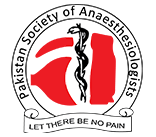Anaesthesiologists are specially trained to provide the following patient care services:
- Provide anaesthesia and care for patients during surgery
- Supervise recovery care for patients after surgery
- Provide pain management for patients
- Provide intensive care for ill patients
- Provide emergency cardio-respiratory resuscitation for patients
- Management of acutely ill patients during transfer to hospital
Role of the Anaesthesiologist in Patient Care During Surgery
Monitoring a patient’s progress
Surgery is both stressful and painful for patients. Anaesthesiologists are there to help patients cope with this stress an pain. In order to anaesthetize and take care of patients, the anaesthesiologist will need to talk and examine the patients before surgery either a day before or on the day of surgery, if patients come on the day of surgery. Some investigations may be ordered when necessary to assess the heart, lungs and other systems. All these will allow the anaesthesiologist, who is specially trained to manage acute crisis, to provide safe anaesthesia and prepare for any expected complications in very ill patients who require urgent surgery.
Patients will normally be given some medication to help keep calm or to reduce the pain as they are wheeled into the Operating Room. Once in the Operating Room, patients will be connected to monitoring devices that allow the anaesthesiologist easy supervision.
The anaesthesiologist may use the following techniques to provide anaesthesia for patients:
- General Anaesthetics–patients are put to ‘sleep’ using an injection or inhaling gas. They are unconscious, pain-free and usually unaware.
- Regional Anaesthetics–injection of local anaesthetics to numb the site where surgery is to be done. Some sedation may be given after the injection to calm to patients.
Role of the Anaesthesiologist in the Recovery Room
After an operation, patients will be transferred to the recovery room to recuperate from anaesthetics. The anaesthesiologist will supervise this recovery stage to make sure the patients are awake, comfortable, and stable before allowed to return to the ward, or home for day cases. Patients who have had major surgery and require ventilatory (breathing machine) support will be managed in the Intensive Care Unit (ICU) under the supervision of the anaesthesiologist concerned.
Role of the Anaesthesiologist in Pain Management
The anaesthesiologist can provide relief in all acute pain due to trauma or other acute illnesses, post-surgical pain, labour pain, chronic pain, and pain due to terminal cancer. There are several methods in providing pain relief. Please consult with your anaesthesiologist for more information.
For a comfortable and less stressful delivery, mothers-to-be can request for epidural analgesia. This method of labour pain relief makes baby delivery more comfortable. A small catheter is placed into the epidural space at the back of the spine and local anaesthetic is injected to numb the nerves to provide pain relief during labour.
Role of the Anaesthesiologist in Emergency Resuscitation and Patient Transfer to Other Medical Institutions
Anaesthesiologists are specially trained to resuscitate patients who are acutely ill (for example, cardio-respiratory failure).This usually involves other specialists who work together with the anaesthesiologist to save a patient’s life. In trauma patients, initial resuscitation needs to be done before surgery.The job of the anaesthesiologist is to make sure that the patients are given the best chance to survive the operation by adequate resuscitation. The anaesthesiologist is also involved in transferring very sick patients who may require mechanical respiratory support and other medical supports to another medical institution for more specialized treatment.
